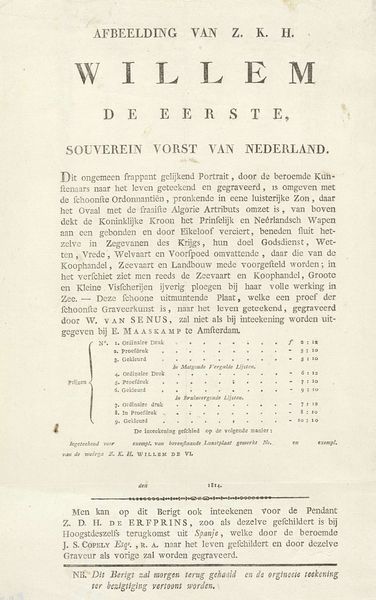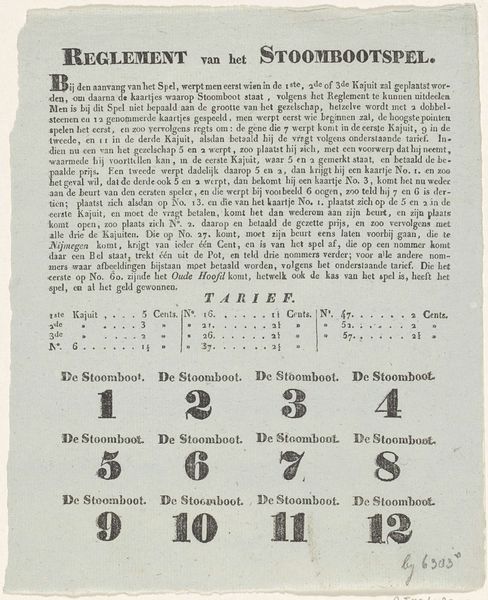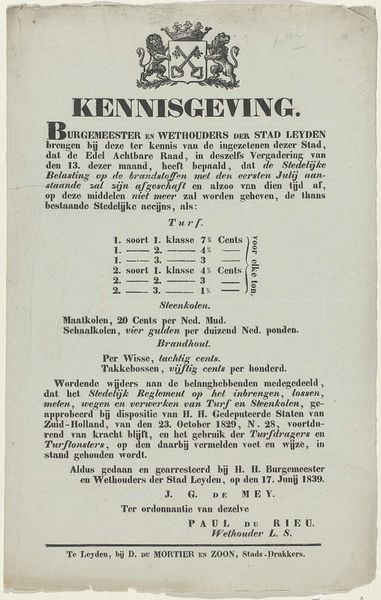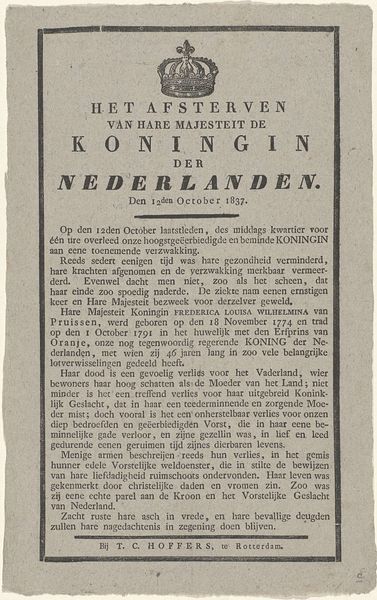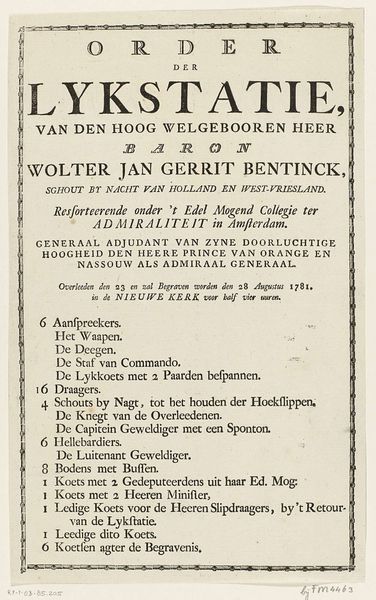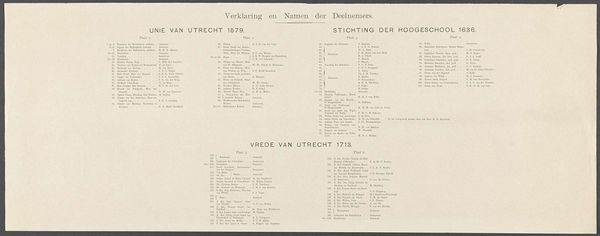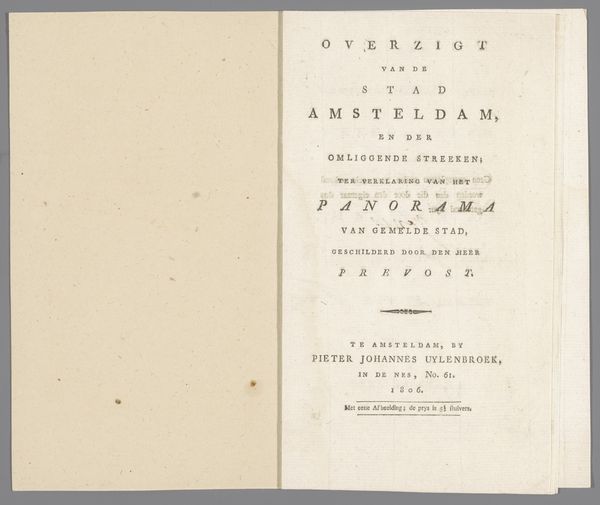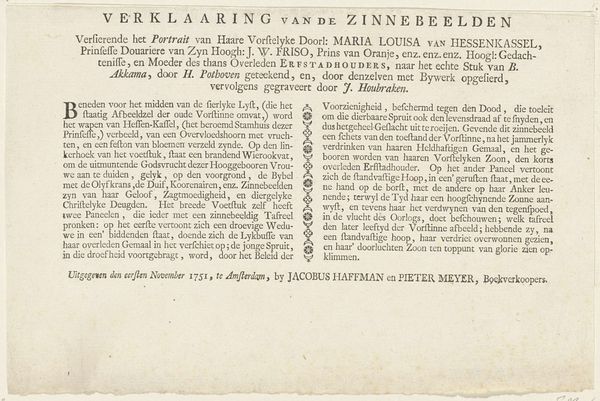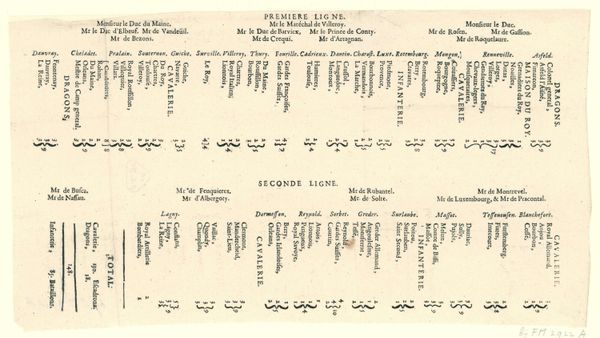
Dienstregeling van de treinen tussen Amsterdam en Voorschoten, 1843 1843 - 1844
0:00
0:00
print, typography
#
hand written
#
hand-lettering
# print
#
hand lettering
#
typography
#
hand-written
#
geometric
#
handwritten font
#
realism
Dimensions: height 103 mm, width 190 mm
Copyright: Rijks Museum: Open Domain
Editor: So, here we have a train timetable, "Dienstregeling van de treinen tussen Amsterdam en Voorschoten," dating back to 1843-44. It seems to be a printed notice detailing train departures. I’m struck by how detailed it is, almost like a piece of graphic design, even though it’s just practical information. What jumps out at you when you look at this, as an artifact of its time? Curator: What interests me is how this simple timetable speaks volumes about societal shifts. The emergence of the railway and the need for a printed schedule reflects a new sense of time and order imposed by industrialization. Before trains, time was likely dictated more by the sun and seasons; now, it's calibrated by the minute across a transportation network. How does the visual presentation of the schedule contribute to its message, would you say? Editor: I suppose the geometric layout and varied font sizes lend a sense of authority and clarity. It's meant to be easily read and understood. Do you think that aesthetic was intentional, or just a byproduct of the printing methods of the time? Curator: I think it's a blend. The desire for clarity is paramount, of course. But the conscious choice of typography – the contrast in weights and styles – it suggests an attempt to lend prestige and importance to rail travel. It's promoting a new technology. It almost romanticizes the journey, wouldn’t you agree? How does understanding its role affect our understanding of 19th-century Dutch society? Editor: It provides a very tangible link to their priorities and shows the growing significance of technology and punctuality in daily life. Thinking about this practically has really broadened how I appreciate it. Curator: Absolutely. An object like this shows that art and design are deeply woven into the everyday, shaping not just what people see, but also how they lived.
Comments
No comments
Be the first to comment and join the conversation on the ultimate creative platform.
